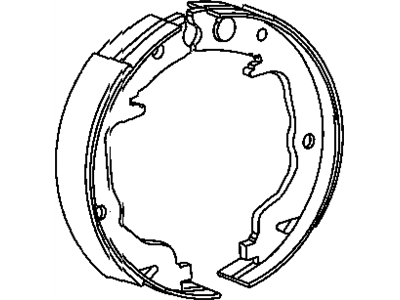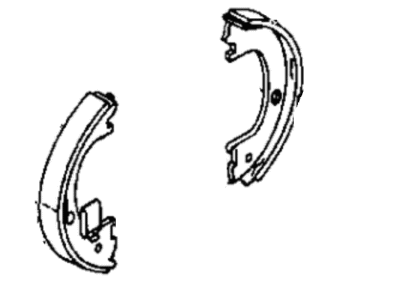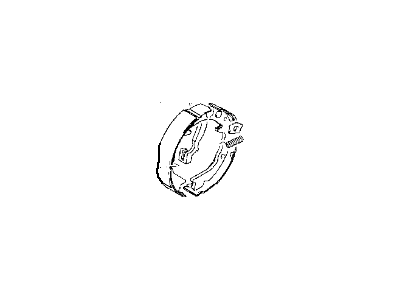
My Garage
My Account
Cart
Genuine Chrysler Sebring Parking Brake Shoe
Emergency Parking Brake Shoe- Select Vehicle by Model
- Select Vehicle by VIN
Select Vehicle by Model
orMake
Model
Year
Select Vehicle by VIN
For the most accurate results, select vehicle by your VIN (Vehicle Identification Number).
8 Parking Brake Shoes found

Chrysler Sebring Parking Brake Shoe
Part Number: 5191215AA$121.48 MSRP: $187.00You Save: $65.52 (36%)
Chrysler Sebring Parking Brake Shoe
Part Number: 5191215AB$126.00 MSRP: $187.00You Save: $61.00 (33%)
Chrysler Sebring Parking Brake Shoe
Parking Brake Shoe as the component that is necessary for stopping the wheels rotation in Chrysler Sebring vehicles when the parking break is initiated. Through application of brake lining that faces the drum wall, the Parking Brake Shoe prevents the rotation of the wheel hence immobilizing the vehicle during a parking session. In various Chrysler sebring models over the years, there have been diverse PARKING BRAKE SHOES each of which has the core function of immobilizing the car in its position. These different styles may be constructed differently or made using different materials but overall, they perform the role of offering the required force to bring the car to a standstill during parking.
Looking for affordable and high-quality auto parts? Then you have already arrived at the proper online shop. We offer all Chrysler Sebring Parking Brake Shoe at great affordable prices. Moreover, all genuine Chrysler Sebring Parking Brake Shoe come with a manufacturer's warranty. In the long run, you would realize you have saved a lot of trouble and money with OEM parts from here.
Chrysler Sebring Parking Brake Shoe Parts Questions & Experts Answers
- Q: How to Replace the Parking Brake Shoes on Chrysler Sebring?A:Loosen the rear wheel lug nuts, raise the rear end of the vehicle and support it securely on jackstands. Block the front wheels to keep the vehicle from rolling. Release the parking brake and remove the rear wheels. Remove the Brake Caliper and Brake Disc. Once the disc is removed, clean the parking brake assembly with brake system cleaner. Using locking pliers, unhook and remove the springs. Remove the adjuster assembly and strut from between the brake shoes. Grasp one of the shoe hold-down cups with pliers and push it toward the brake backing plate to compress the hold-down spring. Twist the cup 1/4-turn to align the slot in the hold-down pin with the cup, then release the spring pressure and take off the cup and spring. Repeat this with the cup and spring on the other parking brake shoe. Take the shoes off the backing plate. Disengage the parking brake lever from the cable. Check all parts for wear and damage, paying special attention to metal-to-metal contact points. Replace worn or damaged parts. Check the parking brake drum surface inside the brake disc for score marks, cracks, deep scratches, and hard spots. Apply a small amount of high-temperature brake grease to the friction points of the backing plate and adjuster screw assembly. Reverse the removal steps to install the brake shoes. The shoe-to-anchor spring with the paint mark is installed with the paint mark toward the rear of the vehicle. Expand the shoes, using the automatic adjuster, until the drum will just fit over them. Install the brake disc and caliper. Adjust the parking brake. Install the wheel and lug nuts. Lower the vehicle and tighten the lug nuts to the torque. Check the operation of the parking brake.
Related Chrysler Sebring Parts
Browse by Year
2010 Parking Brake Shoe 2009 Parking Brake Shoe 2008 Parking Brake Shoe 2007 Parking Brake Shoe 2006 Parking Brake Shoe 2005 Parking Brake Shoe 2004 Parking Brake Shoe 2003 Parking Brake Shoe 2002 Parking Brake Shoe 2001 Parking Brake Shoe 2000 Parking Brake Shoe 1999 Parking Brake Shoe 1998 Parking Brake Shoe 1997 Parking Brake Shoe 1996 Parking Brake Shoe 1995 Parking Brake Shoe


















